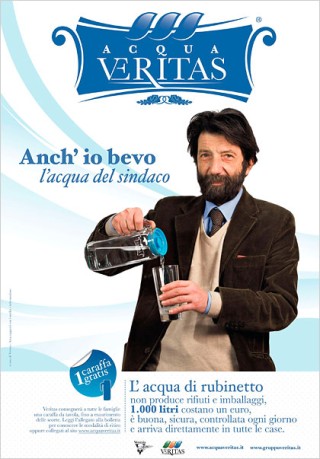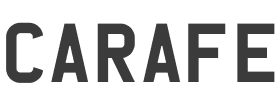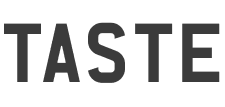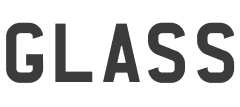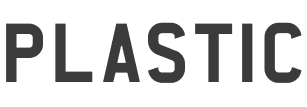- Manufacturer: Eau de Paris
- Designer: Pierre Charpin
- Material: Glass
- Dimensions: 30 × 6 cm
- www.eaudeparis.fr
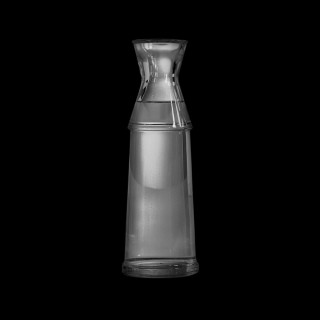
Index
- Tap Water 'Paris water has a mineral and sanitary quality that is just as good as anything you buy in a bottle. Yet it is between 100 and 200 times cheaper. It
- Concept Eau de Paris launched an innovative project: the 'Eau de Paris' carafe. Since tap water 'does not benefit from a container, often a reassuring compone
- Designer Pierre Charpin was born in 1962 in Saint-Mandé (Paris). An artist by education, his devotion to the design of furniture and objects dates from the beg
- Supply Less than 3% of the water on the planet is fresh water. Over 80% of this fresh water is locked away in glaciers and ice sheets and therefore not readi
- Drinking Water In ancient Greece spring water, well water, and rainwater were used very early on. Because of a fast increase in urban population, Greece was forced t
- Taste While water composition and quality vary among local utilities, all tap water must meet certain uniform, federal standards, as set by the Safe Drinkin
- Definition According to the Merriam-Webster dictionary, the Italians changed the Arabic word gharrafa, (a vessel used to hold coffee), to caraffa. But the Italia
- Glass There is historical evidence that glass was discovered in 5,000 BC in Syria and there is evidence of a glass vase from Mesopotamia, dating 1500BC. Wit
- Plastic Here is a list of plastic bottle fun facts that put the magnitude of this pollution into scope. Plastic bottles take 700 years to begin composting 90
- Campaigns London On Tap, the campaign promoting the capital's tap water, today launched the carafe it hopes to roll out across London's bars, hotels and restaur
'Paris water has a mineral and sanitary quality that is just as good as anything you buy in a bottle. Yet it is between 100 and 200 times cheaper. It is delivered straight to your home. And there is no packaging' said Anne Le Stat, president of Eau de Paris.
Eau de Paris
For a few years now in Île-de-France, tap water has been promoted through several campaigns driven by companies that distribute tap water in Paris and surrounding areas.
They have a common objective: promoting tap water's benefits in comparison with bottled water and thus encouraging consumers to change their opinion of tap water. The objective is to 'reduce the disparity between the actual quality of tap water and the public's perception of it'.
The first argument involves tap water quality. Based on the assumption that Parisians know little about tap water - many even ask whether it is drinkable. Eau de Paris proposed a label that could 'be affixed to the tap'. The label explains the origin of Eau de Paris and its average mineral content. The label also states that Paris 'tap water is perfectly balanced in minerals' and that it is 'excellent quality and should be enjoyed without moderation!'
Preferred Choice
In England, WaterAid reveals that tap water is the preferred choice for 63% of people when they dine out. Over 23.5 million people prefer to order tap water with their meals rather than bottled.
Consumption
Bottled water consumption has been steadily growing in the world for the past 30 years, in spite of its excessively high price compared to tap water.
The Italian drink more bottled water than anybody else in the world, followed by the French who drink about 130 liters per year per inhabitant. In this country, despite an access to safe public drinking water, 42% of the population regularly drink bottled water. Households, who instead of drinking water from the tap, spend up to 100 times more for bottled water.
Eau de Paris launched an innovative project: the 'Eau de Paris' carafe. Since tap water 'does not benefit from a container, often a reassuring component, as easily identifiable as bottled water', Eau de Paris teamed up with contest-winner Pierre Charpin to design a carafe. This symbolic and elegant carafe, both practical and easy to use, aims to return dignity to tap water and is on its way toward becoming 'the symbolic water object in Paris.'
'It's all about giving Paris water an image and explaining why it is good for you.'
The 30,000 carafes are designed to fit in the door of a fridge and are meant to be filled with tap water, providing an environmentally friendly alternative to plastic bottles.
Eau de Paris, which distributed the carafes in front of the Hotel de Ville on World Water Day, claims its mineral and sanitary quality is just as good as that of any bottled water.
Pierre Charpin was born in 1962 in Saint-Mandé (Paris). An artist by education, his devotion to the design of furniture and objects dates from the beginning of the 1990s. His research appears in the projects which he develops for the Design Gallery Milano and the Kreo Gallery in Paris. In tandem with his more experimental projects his work is recognized by various companies of international renown such as Zanotta, Montina, Venini and La Manufacture Nationale de Sèvres. In 2004 he won a competition for the design of a water carafe for the Société Anonyme de Gestion des Eaux de Paris (Paris Waterworks), the 'Eau de Paris' carafe; the 'Triplo' vase produced by Venini appears in the selection of the Compasso d' Oro 2005. The Paris Furniture Fair elected him creator of the year 2005.
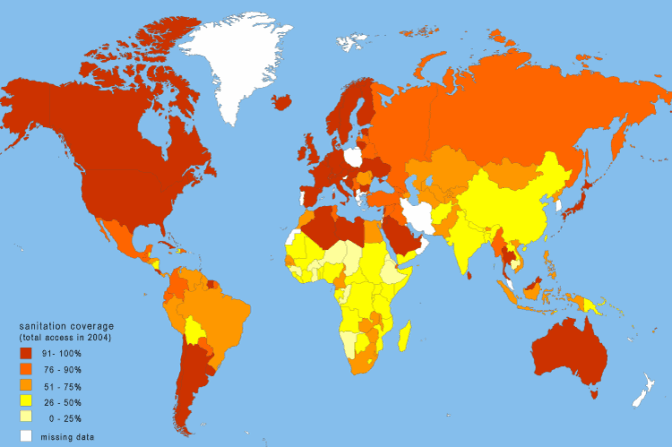
Less than 3% of the water on the planet is fresh water. Over 80% of this fresh water is locked away in glaciers and ice sheets and therefore not readily available to us. If you do the math, only 0.5% of all the water on the planet is available for use by man, and nearly all of this water is beneath the surface of the earth in the form of groundwater. Water scarcity, whether through drought or inadequate distribution can lead to disease, famine, and even armed conflict. Unfortunately, based on UN population projections, it is estimated that by 2025 more than 2.8 billion people in 48 countries will face water stress or scarcity conditions.
According to the United Nations and World Health Organization, there are roughly 1.1 billion people in the world who do not have adequate access to clean drinking water. Over 2.6 billion people, nearly half the world's population, do not have access to adequate sanitation. Even where fresh water supplies exist; it is often rendered unsafe through contamination by human waste, untreated industrial waste, and agricultural runoff. Tragically, again according to the UN, 'Polluted water is estimated to affect the health of more than 1.2 billion people, and to contribute to the death of an average 15 million children every year.' Clearly, clean water, free of waste and contaminants, is an absolute necessity for a sustainable, thriving and equitable human society.
Political Commodity
Due to increasingly lower availability of water in many parts of the world, water has become a 'political commodity'. In fact, some conflicts have also been fought because of water. Politics and laws do also play a role in areas with plenty of water resources – just think of ownership laws and rights of disposal. As a matter of fact, the protection of this resource is embodied in essential bodies of law.
Needs
Why is water so important?
Most adults lose about 10 cups of water every day through normal body functions including perspiration and breathing.
To keep our bodies working properly, we need to replace the water that we lose.
In ancient Greece spring water, well water, and rainwater were used very early on. Because of a fast increase in urban population, Greece was forced to store water in wells and transport it to the people through a distribution network. The water that was used was carried away through sewers, along with the rainwater. When valleys were reached, the water was led through hills under pressure. The Greeks were among the first to gain an interest in water quality. They used aeration basins for water purification.
The Romans were the greatest architects and constuctors of water distribution networks in history. They used river, spring or groundwater for provisioning. The Romans built dams in rivers, causing lakes to form. The lake water was aerated and than supplied. Mountain water was the most popular type of water, because of its quality. For water transport the aquaducts where built. Through these aquaducts water was transported for tens of miles. Plumming in the city was made of concrete, rock, bronze, silver, wood or lead. Water winnings were protected from foreign pollutants.
The first drinking water supply that supplied an entire city was built in Paisley, Scotland in 1804 by John Gibb, in order to supply his bleachery and the entire city with water. Within three years, filtered water was transported to Glasgow.
In 1806 Paris operated a large water treatment plant. The water settled for 12 hours, before it was filtered. Filters consisted of sand and charcoal and where replaced every six hours.
In 1827, the Englishman James Simpson built a sand filter for drinking water purification. Today, we still call this the number one tribute to public health.
While water composition and quality vary among local utilities, all tap water must meet certain uniform, federal standards, as set by the Safe Drinking Water Act (SDWA), passed in 1974 and updated in 1996. These steps remove impurities from water through sifting, chemical reactions, gravity and residual concentrations.
Taste Test
The labels of the bottled waters do suggest they're special. But does that make it taste better?
We ran a taste test, offering people New York City tap water and five other bottled waters, Evian, the top-selling bottled water Aquafina, Poland Spring, Iceland Spring (which comes all the way from Iceland), and American Fare, a discount brand from Kmart, which sells for less than half the price of Evian.
Lots of people said one of the waters was particularly bad. Was that the tap water? No. Tap water did pretty well. Even people who said they don't like it, liked it on the blind test. The '20/20' taste test was just one unscientific test, but lots of tests keep finding that people like tap water.
According to the Merriam-Webster dictionary, the Italians changed the Arabic word gharrafa, (a vessel used to hold coffee), to caraffa. But the Italians not only used it to hold coffee, they also used it to hold wine. In the 1700s, the French changed caraffa to carafe. Today, a carafe is a bottle shaped container, with a wide bottom and a flaring lip, used to hold beverages for immediate consumption. Most carafes also have narrower necks than the bottom or lip. [...]
Today, carafes are made out of glass and crystal, metal such as copper, chrome, silver and stainless steel, plastic, ceramic and earthenware. They can be clear glass or colored, plain designed, cut-glass in the case of crystal, theme designed, monogrammed, or have your logo etched on the side.
There is historical evidence that glass was discovered in 5,000 BC in Syria and there is evidence of a glass vase from Mesopotamia, dating 1500BC. With the establishment of trade routes during the The Roman Republic (500BC - 27BC) and the Roman Empire (27BC - 476AD), glass production increased tremendously. Light weight serving containers made out of glass were used to transport liquids. After the fall of the Roman Empire, glass production decreased. Late in the Renaissance Period in Venice, Italy (late 1500s, early 1600s), glass blowers revived the art of making bottles. In the 1600s, the French started using bottles and corks (first used as stoppers by the ancient Egyptians). And in the early 1730s in England, glass stoppers were first invented.
Here is a list of plastic bottle fun facts that put the magnitude of this pollution into scope.
- Plastic bottles take 700 years to begin composting
- 90% of the cost of bottled water is due to the bottle itself
- 80% of plastic bottles are not recycled
- 38 million plastic bottles go to the dump per year in America from bottled water (not including soda)
- 24 million gallons of oil are needed to produce a billion plastic bottles
- The average American consumes 167 bottles of water a year
- Bottling and shipping water is the least energy efficient method ever used to supply water
- Bottled water is the second most popular beverage in the United States.
- greenupgrader.com/3258/plastic-bottle-facts-make-you-think-before-you-drink/
- img.dailymail.co.uk/i/pix/2007/07_03/WaterBottles1PA_468x324.jpg
Growth
Bottled water is the single largest growth area among all beverages, that includes alcohol, juices and soft drinks. Per capita consumption has more than doubled over the last decade, from 10.5 gallons in 1993 to 22.6 in 2003, according to the Beverage Marketing Corporation.
The growth has been even more impressive in terms of water bottles sold: from 3.3 billion in 1997 to 15 billion in 2002. But most bottled water is consumed away from home, usually at a park, in an office or even while driving — areas where there's usually no recycling. 'The opportunities for recycling outside the home are minimal,' Franklin says, 'and therein lies the problem.'
Bottles by the numbers:
Only about 12 percent of 'custom' plastic bottles, a category dominated by water, were recycled in 2003, according to industry consultant R.W. Beck, Inc. That's 40 million bottles a day that went into the trash or became litter. In contrast, the recycling rate for plastic soft drink bottles is around 30 percent.
London On Tap, the campaign promoting the capital's tap water, today launched the carafe it hopes to roll out across London's bars, hotels and restaurants.
The campaign, which was launched by Thames Water and the Mayor of London last year, aims to promote the use of tap water and to highlight the impact of bottled water on climate change and the environment. The Mayor of London, Boris Johnson, said he was 'delighted' that the new London On Tap carafe is now available. 'This campaign has been a great success, not only has it highlighted the talent of the designers we have here in the capital, but Londoners can feel empowered to ask for London's finest tap water rather than bottled varieties,' he said. 'This reduces waste and helps to cut our emissions in the capital.'
- www.caterersearch.com/Articles/2009/05/19/327755/london-on-tap-launches-carafe-to-promote-tap-water.html
- www.wef.org/Publications/page_highlights.aspx?id=4880&page=features
Acqua Veritas
In Venice, officials took a leaf from the advertising playbook that has helped make bottled water a multi billion-dollar global industry. They invented a lofty brand name for Venice's tap water 'Acqua Veritas' created a sleek logo and emblazoned it on stylish carafes that were distributed free to households.
According to the Veritas press office, the program has received only positive feedback, and the company is starting to see some positive trends. The percentage of people who drink tap water has increased from 74% to 78%, and the amount of plastic bottles collected in Venice has decreased from 257Mg / month to 237Mg / month since the program began, according to an annual survey by the company.
